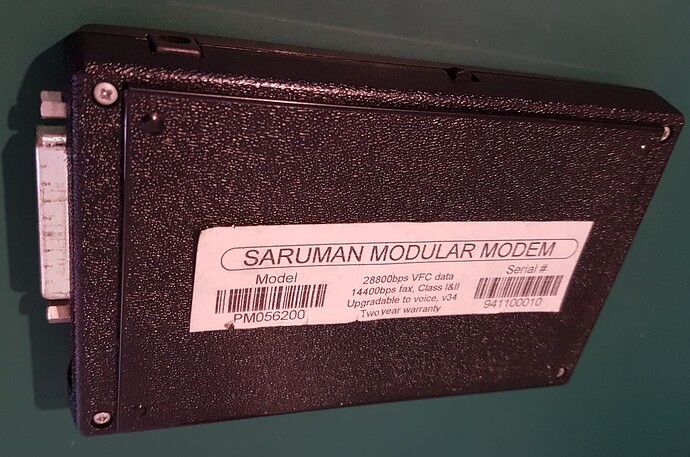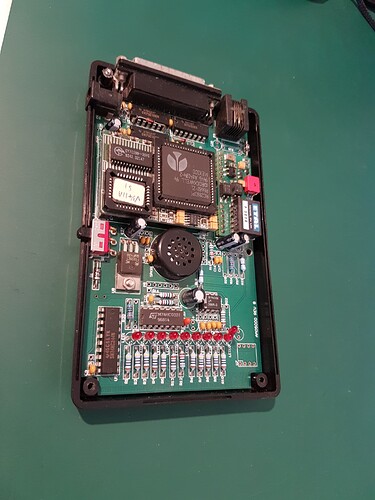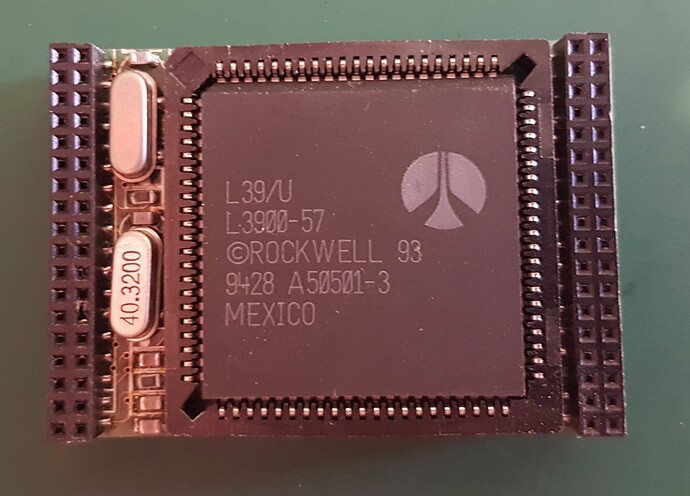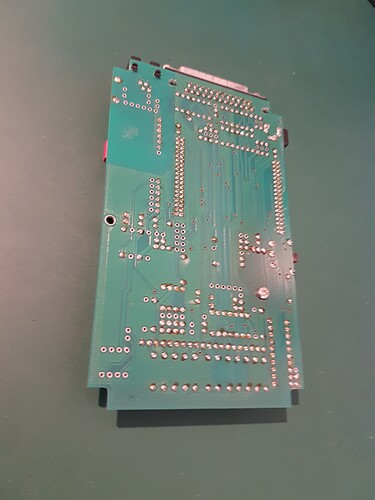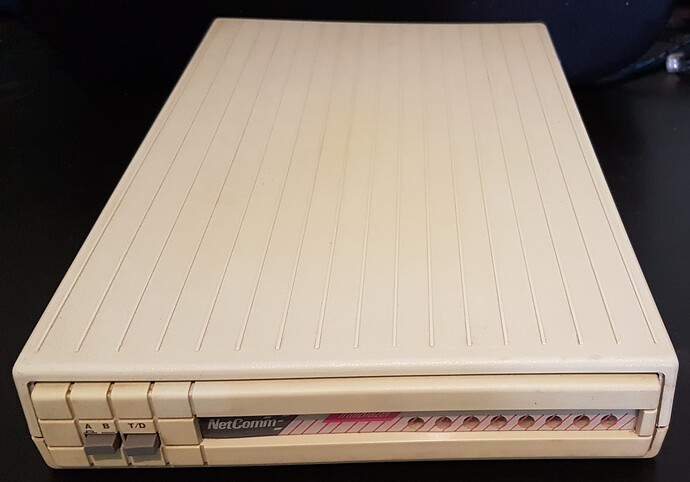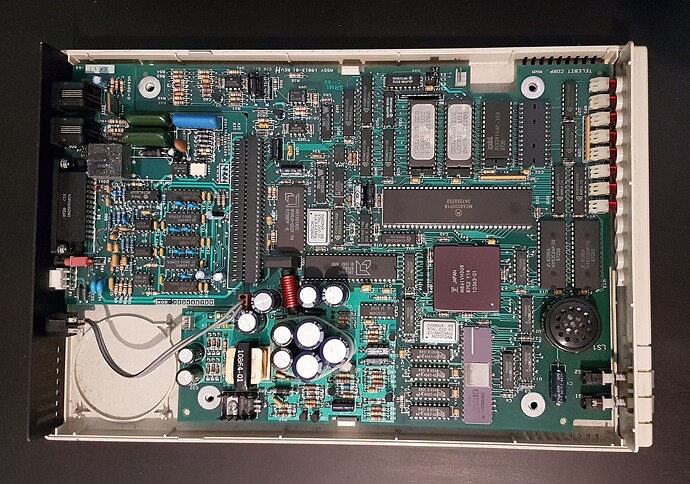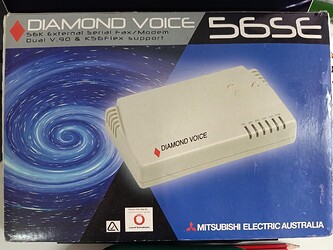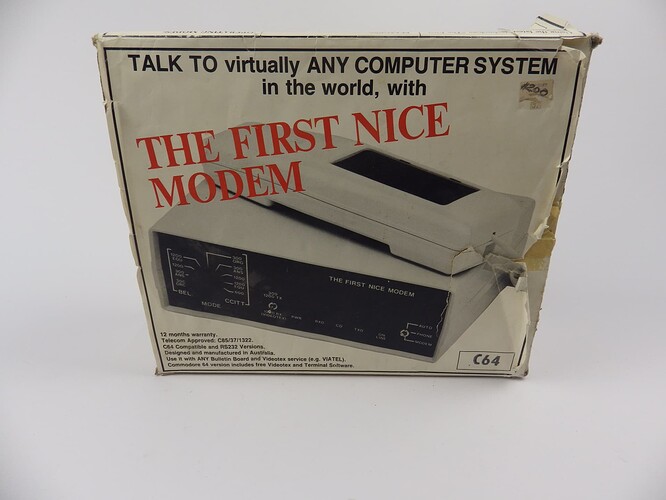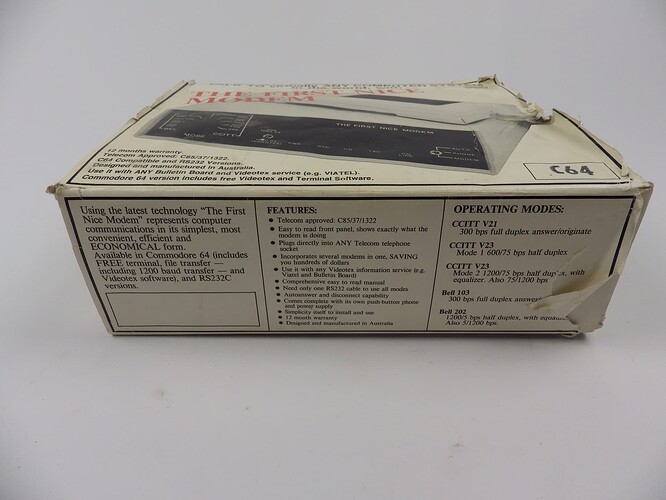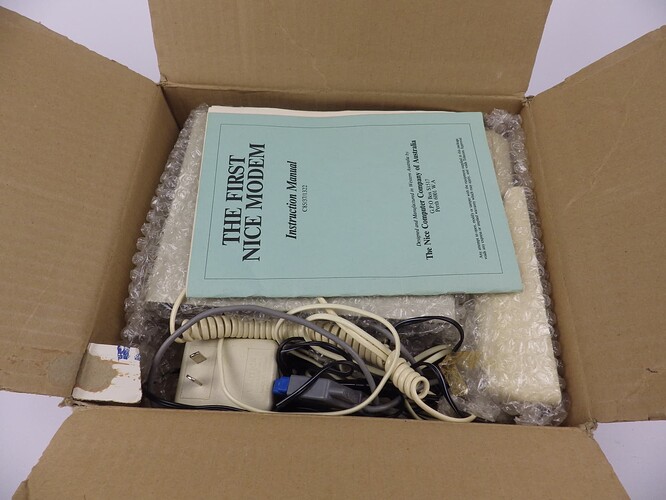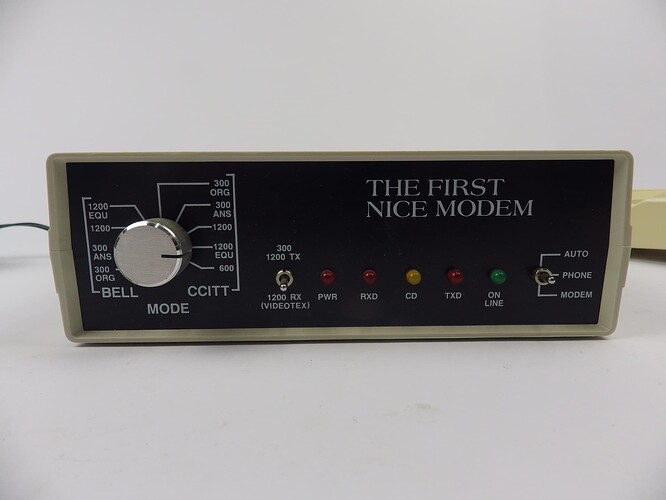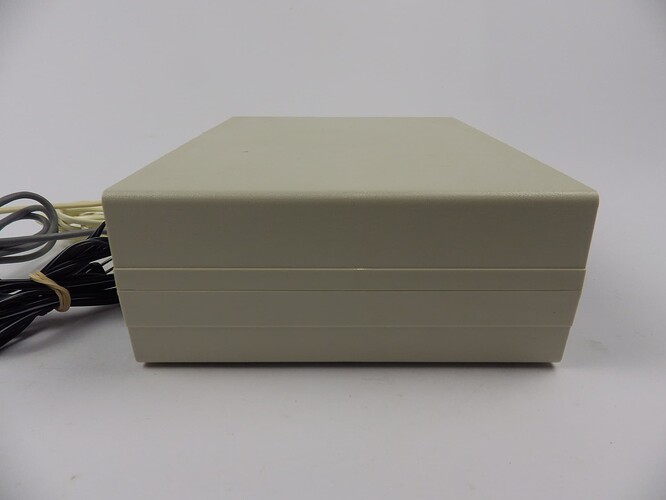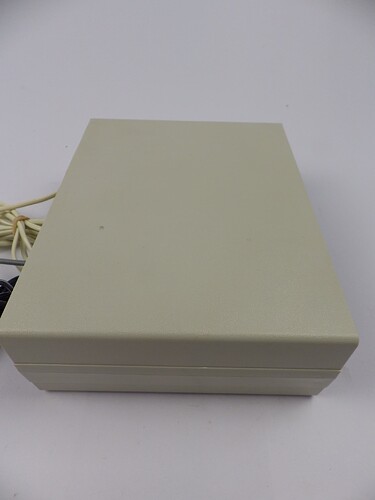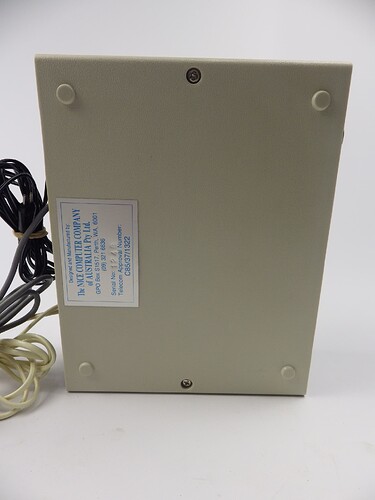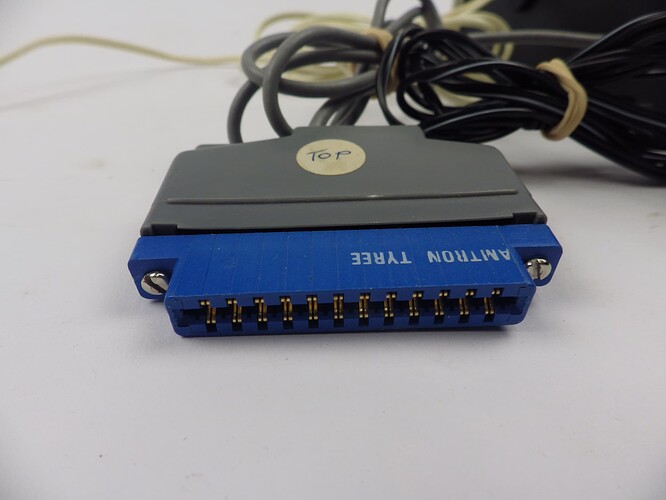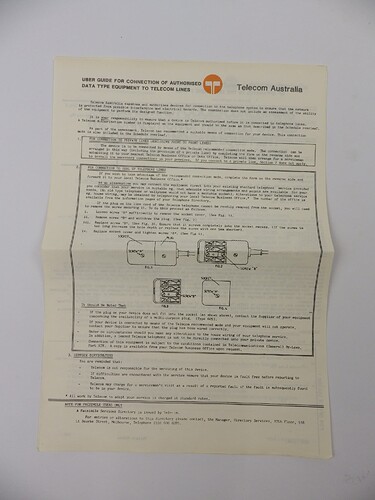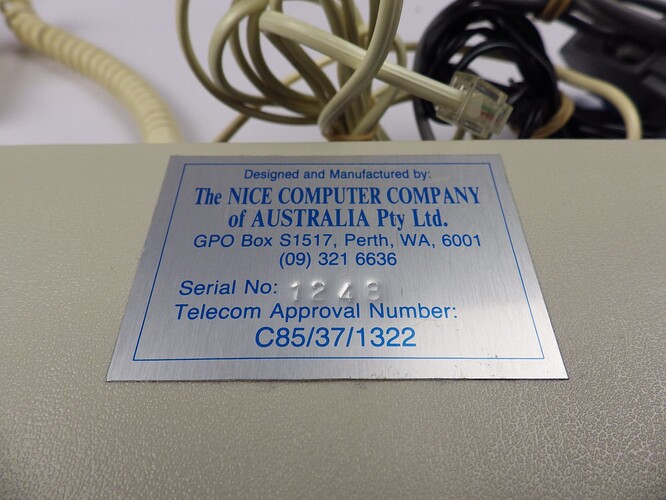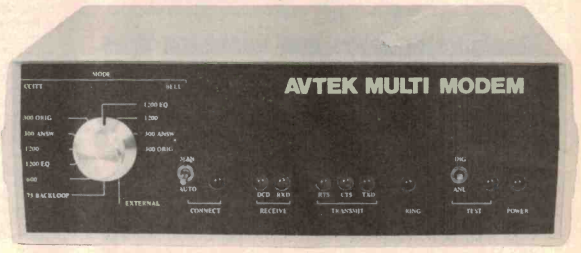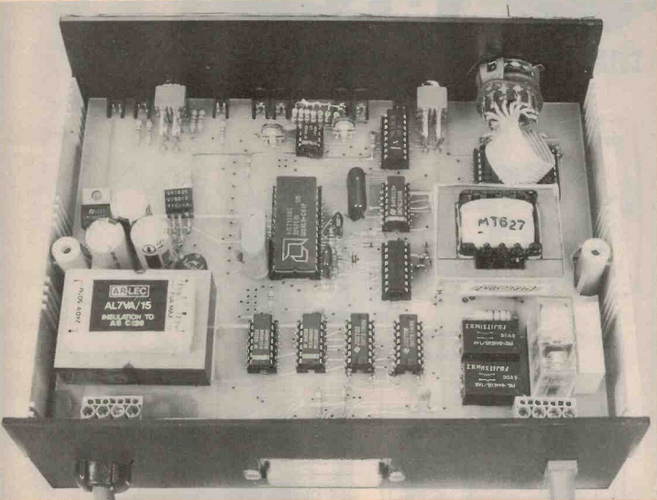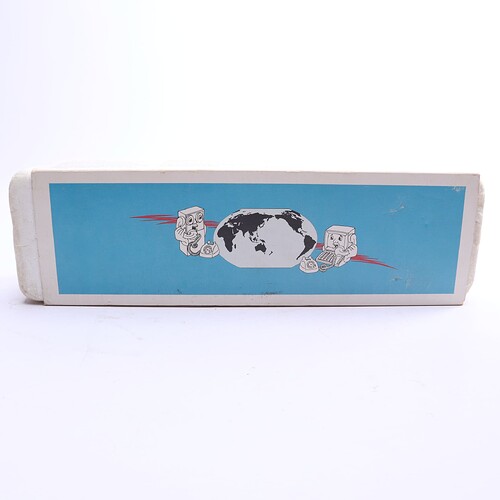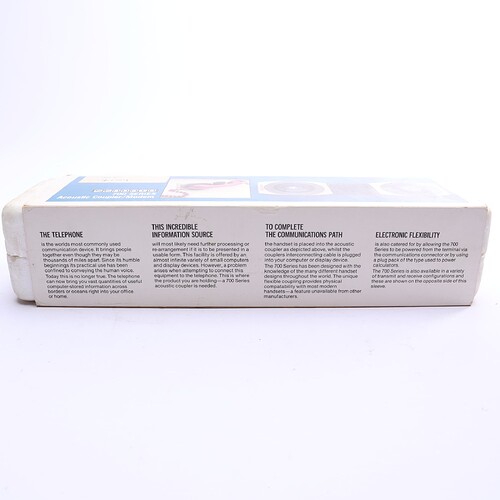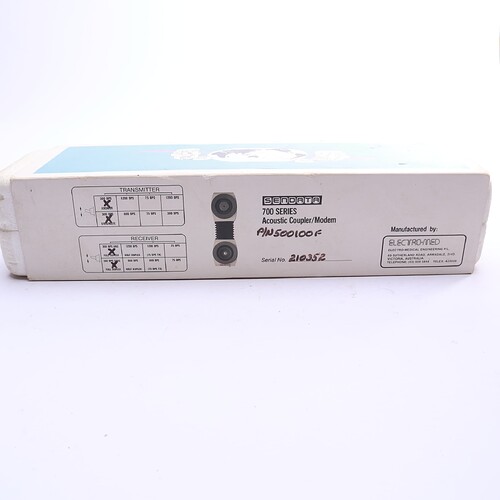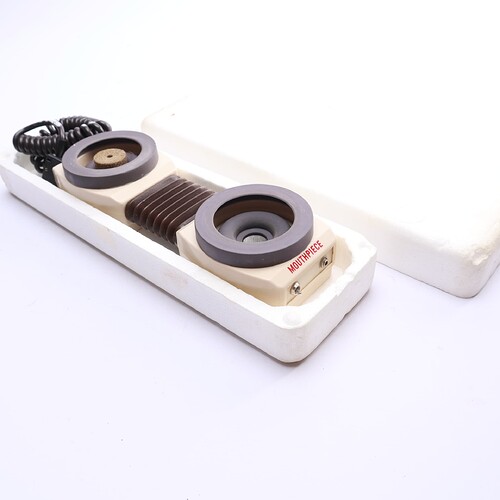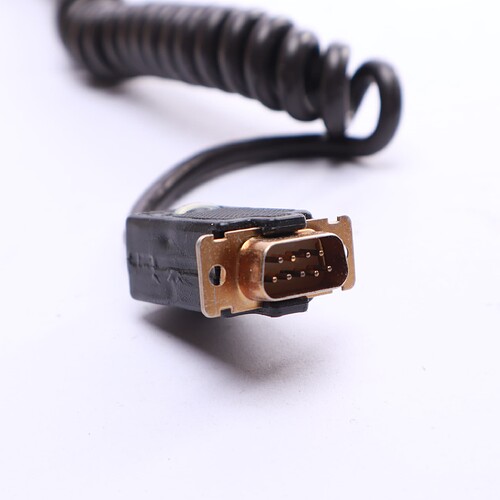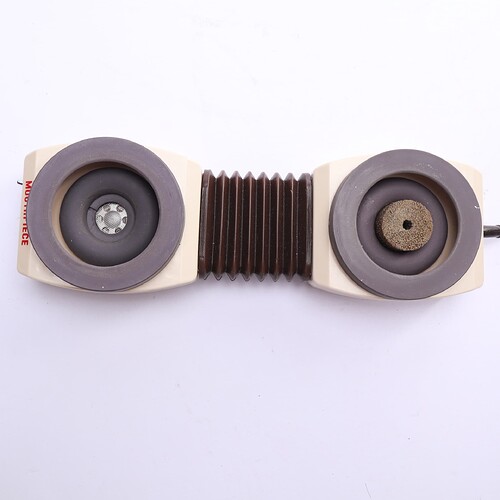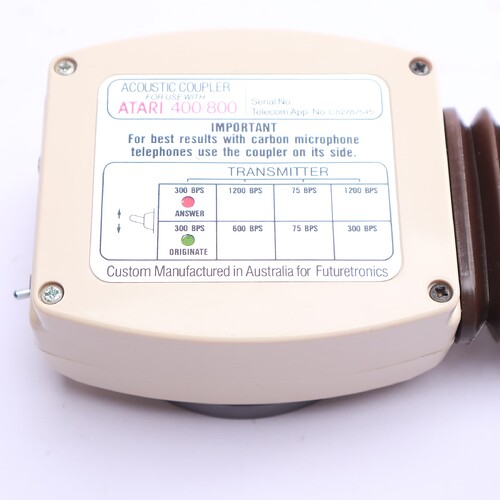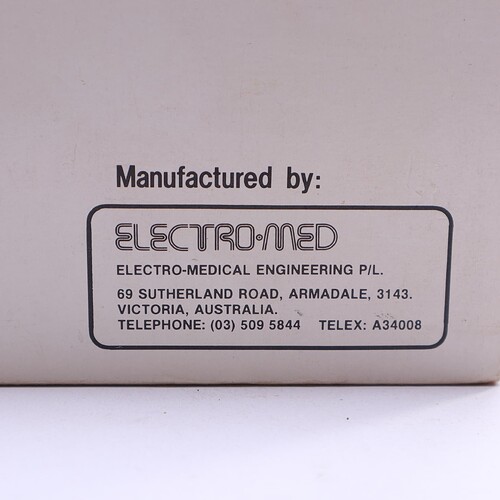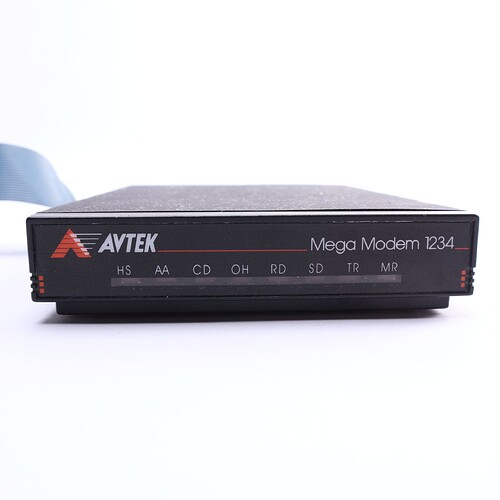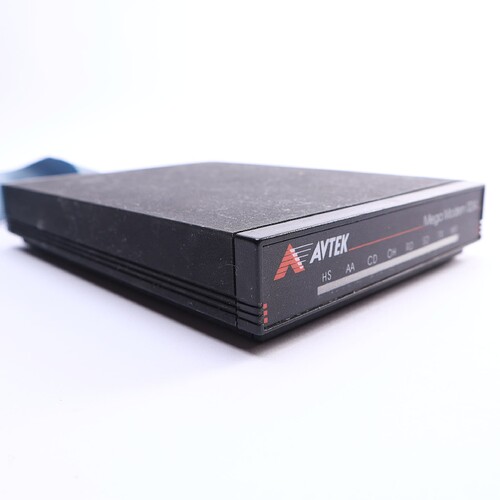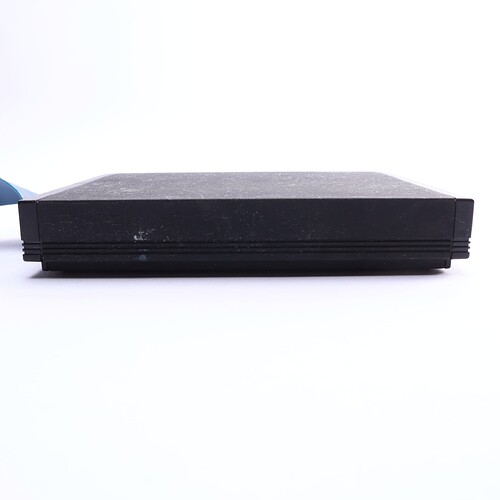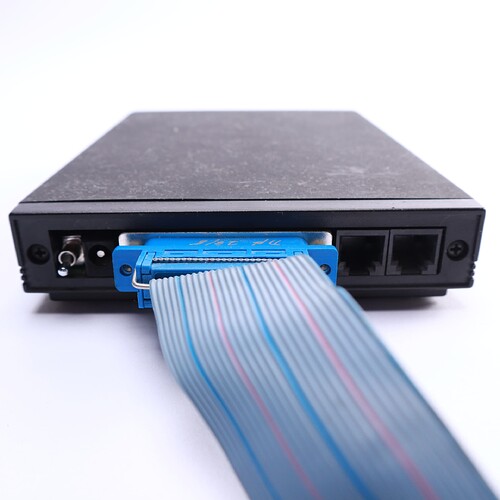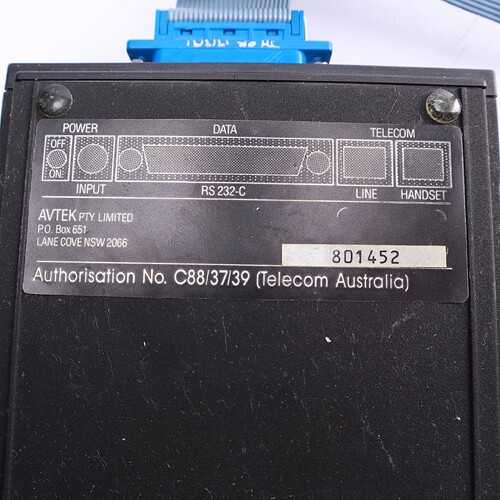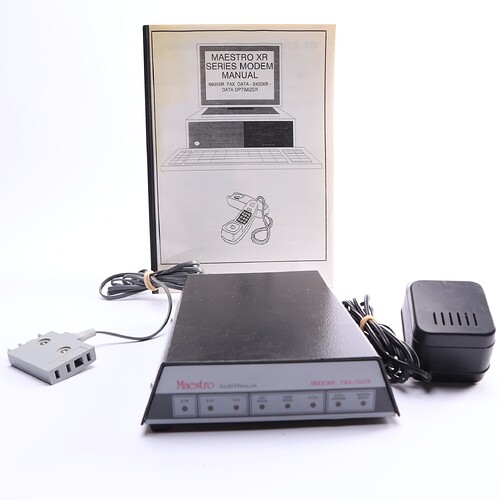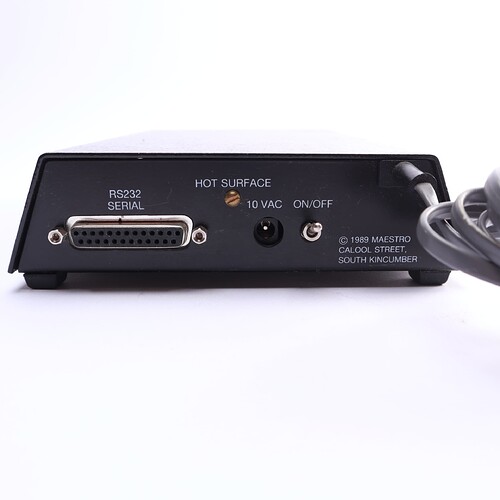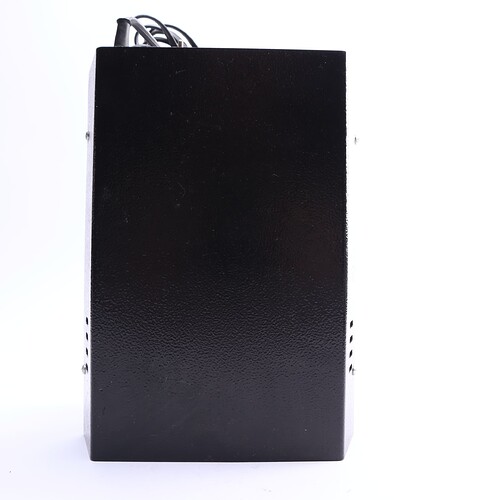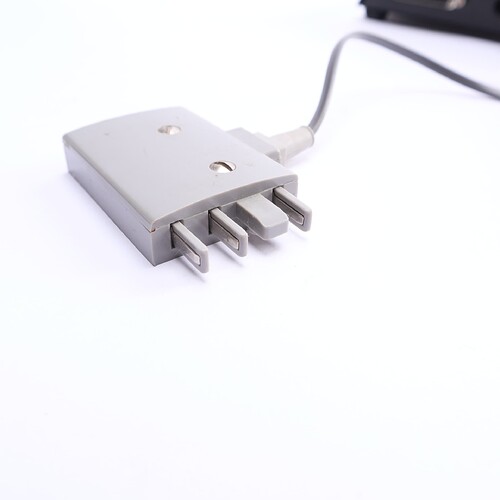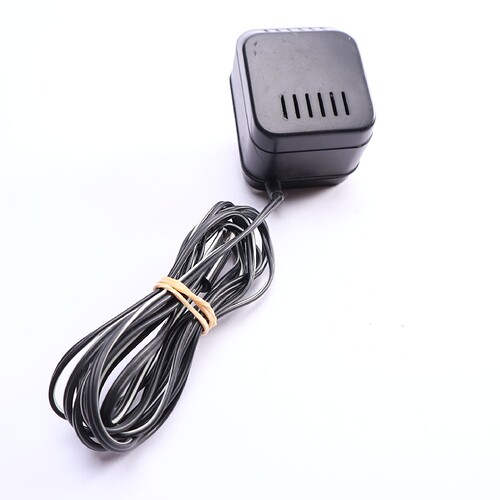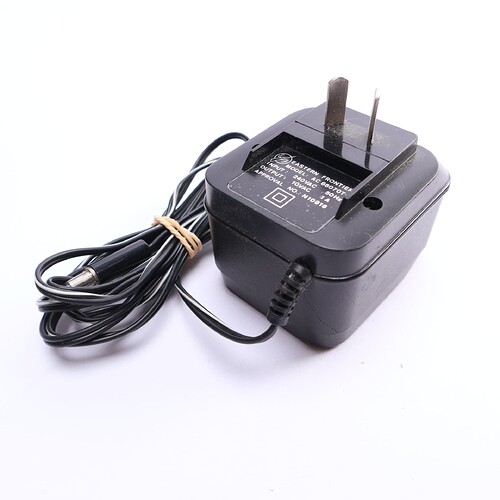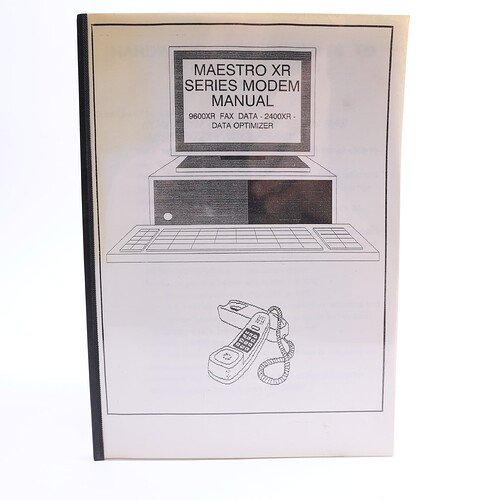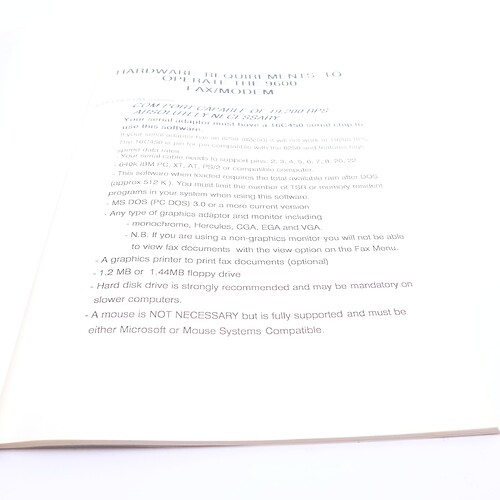Saruman Modular Modem (V34 Desktop), late 1994 release. Unit was one of the first run made, but upgraded firmware over time. Suspect based on the heat issues I had, they may have changed the case, or at least used a better regulator that didn’t produce as much heat (good ol’ 7805 series).
Pic of the bottom which gives the model/serial details (sorry about the weird angle):
Inside the case. Really isn’t a lot to this modem.
As with a lot of late-model V34 capable modems, they use a Rockwell Chipset pair, in this case on a daughter-board that sits on the main PCB - RC288DPi on the top (visible above photo) & L39/U on the back (below pic) of the daughter board.
Nothing on the back of the PCB except traces.
Netcomm Trailblazer (rebadge of Telebit Trailblazer). These used the PEP protocol when doing faster than 2400bps. They used OFDM with 512 channels to get close to 18kbps in one direction. Each of the 512 channels could be assigned a direction, so the 18kbps of total bandwidth could be split dynamically or in a fixed arrangement. Under high noise, each channel could be ignored, allowing graceful degradation in increments of about 10bps. More detail about the Telebit can be found at the Telebit page at Wikiwand
These things were HUGE! 22cm wide, 33 cm deep, and 5cm high.
Only 8 LEDs and 2 buttons on the front. you could have 2 configs saved and switch between then (A/B) , while the T/D was a push-button to manually switch between telephone and data.
Manufactured by Telebit, Redistributed by Netcomm. States the supply was 18VAC.
3 pin power connector on the back. Probably means it was a centre tapped PSU like the Datacraft one. Rear panel is metal, while the rest of the case is plastic. Same type of plastic case and rear panel as the US Telebit Trailblazer, so it’s likely they had a set form-factor for placement that was dictated to local distributors.
There’s 2 separate boards in here. The front board is the Telebit modem (used a 68000 for processing data, which was just part of why it was not cheap), while the rear part is the line interface, power and serial board, which was manufactured by Netcomm, but obviously based on a Telebit layout and underlying design. Telebit was obviously thinking about sales outside Australia when they came up with this setup, which was common given how well these performed with noisy lines (eg: on international calls).
